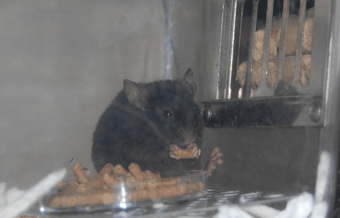Dopamine receptor knockout miceB6.129S-Drd1a RBRC 01080
|
Dopamine, a principal neurotransmitter, is distributed in most parts of the central nervous system (CNS) and is required by a number of major neural systems of the brain, mediating locomotor activity (nigrostantial system), motivated behavior (mesolimbic system), and learning and memory (mesocortical system). Impairment in the nigrostriatal pathway contributes to dysfunctional movement, a common symptom in Parkinson’s disease. The dopamine D1 receptor (Drd1) knockout mouse was generated to specify the functional role of Drd1 in behavioral and neural responses to prediction of reward. The knockout mice of other dopamine receptor subtypes (see Related strains) are also available for study of the biological functions of the dopaminergic system.
| Related strains | : | B6.129S-Drd2<tmlMok> RBRC01081 | |
| B6.129S-Drd3<tmlMok> RBRC01082 | |||
| B6.129S-Drd4<tmlMok> RBRC01083 | |||
| B6.129S-Drd5<tmlMok> RBRC01084 | |||
| B6.129-Drd4<tmlMok> RBRC02341 | |||
| B6.129-Drd5<tmlMok> RBRC02335 | |||
| Depositor | : | Dr. Toshikuni Sasaoka, Brain Research Institute, Niigata University | |
| References | : | [1] | Anh Hai Tran et al. Dopamine D1 receptor modulates hippocampal representation plasticity to spatial novelty. J. Neurosci 28: 13390-13400, 2008 |
| [2] | Anh Hai Tran et al. Dopamine D1 receptors involved in locomotor activity and accumbens neural responses to prediction of reward associated with place. PNAS102:2117-2122, 2005. | ||
| [3] | Anh Hai Tran et al. Altered accumbens neural response to prediction of reward associated with place in dopamine D2 receptor knockout mice. PNAS 99: 8986-8991, 2002. | ||







